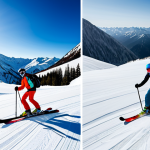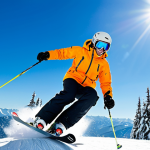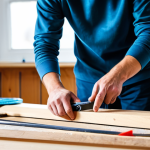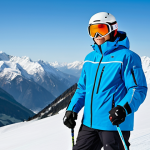Hitting the slopes for the first time, whether you’re on skis or a snowboard, can be super exciting, but also a little daunting when it comes to figuring out what to wear.
I remember my first time – I was so overdressed I could barely move! The key is to find that sweet spot between staying warm and having enough mobility to actually learn.
This isn’t just about fashion; it’s about enjoying your time on the mountain and staying safe from the elements. Think layers, waterproof gear, and don’t forget those essential accessories that can make or break your day.
Believe me, nothing ruins a ski trip faster than frozen fingers or a soaking wet backside. Let’s dive into the essentials to get you geared up properly!
Alright, let’s get you ready to shred some powder! Here’s what you should consider wearing for your first ski or snowboard trip, based on my experiences and what I’ve seen work for others over the years.
Mastering the Layering
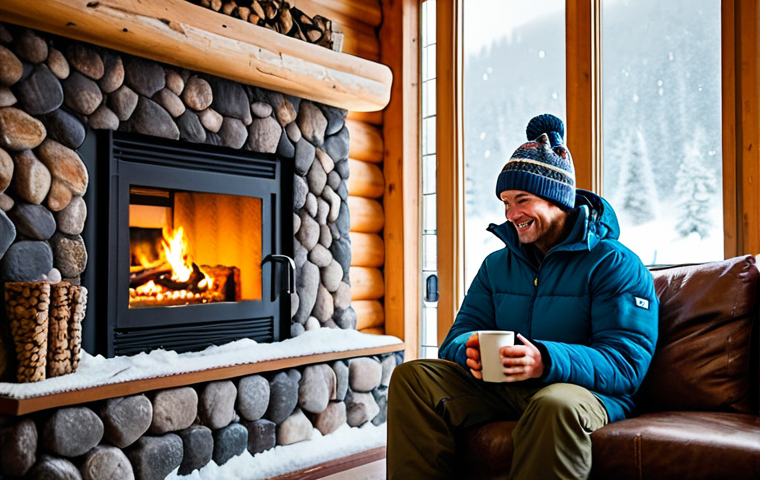
Layering is absolutely crucial. It’s not just about piling on the clothes; it’s about creating a system that traps warm air and wicks away moisture. I learned this the hard way after a particularly sweaty and freezing afternoon when I thought one massive parka would do the trick.
Start with a good base layer, then add insulation, and finish with a waterproof outer layer. This way, you can adjust as the weather changes throughout the day.
Trust me, you’ll thank yourself when the sun comes out and you can shed a layer without ending up shivering in the lodge.
1. Base Layers: The Foundation of Warmth
Think of these as your second skin. You want something that’s snug but not restrictive, made of moisture-wicking materials like merino wool or synthetic fabrics.
Avoid cotton like the plague – it gets wet and stays wet, which is a recipe for misery. I once wore a cotton t-shirt under my ski gear and spent the entire day feeling like a damp sponge.
Not fun! Look for long-sleeved tops and leggings to cover as much skin as possible.
2. Insulating Layers: Trapping the Heat
This is where you add some warmth. Fleece jackets or vests are a great option, as are lightweight down or synthetic insulated jackets. The key is to choose something that provides warmth without being too bulky.
I usually go for a fleece because it’s versatile and easy to pack. On colder days, I might add a down vest for extra insulation around my core.
The Outer Shell: Waterproofing and Wind Protection
Your outer layer is your shield against the elements. Look for a waterproof and windproof jacket and pants – these are non-negotiable. Pay attention to the waterproof rating (measured in millimeters) – the higher the number, the more waterproof the fabric.
Also, check for features like sealed seams and waterproof zippers to prevent water from seeping in. I remember a friend who bought a “water-resistant” jacket and ended up soaked to the bone after a few hours in the snow.
Learn from her mistake!
1. Jacket Features to Consider
Look for a jacket with a hood (preferably one that’s helmet-compatible), adjustable cuffs, and plenty of pockets for stashing essentials like your phone, wallet, and snacks.
Pit zips (zippered vents under the arms) are also a great feature for regulating temperature.
2. Pants: Comfort and Protection
Your ski or snowboard pants should be waterproof, insulated (or designed to be worn with base layers), and have reinforced knees and seat. Look for features like gaiters (elastic cuffs that fit over your boots) to keep snow out and zippered pockets for storing small items.
Hand and Feet Protection: Gloves and Socks Matter
Don’t underestimate the importance of keeping your hands and feet warm and dry. Frostbite is no joke, and cold extremities can ruin your day on the slopes.
Invest in quality gloves or mittens and moisture-wicking socks.
1. Gloves vs. Mittens: Personal Preference
Gloves offer more dexterity, while mittens tend to be warmer. I personally prefer mittens because my fingers get cold easily. Look for gloves or mittens with waterproof and breathable membranes, insulated linings, and adjustable wrist straps.
2. Socks: Ditch the Cotton
Just like with base layers, avoid cotton socks at all costs. Opt for wool or synthetic socks that wick away moisture and provide cushioning. Bring an extra pair in case your feet get wet.
Headgear: Helmets and Beanies
Safety first! A helmet is essential for protecting your head in case of a fall. And a beanie or balaclava can help keep your head and face warm.
1. Helmets: A Must-Have
Make sure your helmet fits properly and meets safety standards. Look for features like adjustable vents and removable ear pads. I’ve seen too many people get seriously injured without helmets to ever consider going without one.
2. Beanies and Balaclavas: Extra Warmth
Wear a beanie under your helmet for extra warmth. On very cold days, a balaclava can protect your face and neck from the wind and cold.
Eye Protection: Goggles are Essential
Goggles protect your eyes from the sun, wind, and snow. Look for goggles with UV protection and anti-fog coatings.
Choosing the Right Lens Tint
Different lens tints are designed for different weather conditions. Amber or rose-tinted lenses are good for cloudy days, while dark lenses are better for sunny days.
Some goggles come with interchangeable lenses so you can adapt to changing conditions.
Other Accessories for Comfort and Convenience
Don’t forget these essential accessories to make your day on the slopes more comfortable and enjoyable. * Sunscreen: Protect your skin from the sun, even on cloudy days.
* Lip balm: Keep your lips hydrated to prevent chapping. * Neck gaiter or scarf: Protect your neck from the wind and cold. * Hand and foot warmers: For extra warmth on very cold days.
* Backpack: To carry water, snacks, and extra layers.
Quick Reference Table
Here’s a quick reference table summarizing the essential items to wear for your first ski or snowboard trip:
| Item | Description | Material |
|---|---|---|
| Base Layers | Moisture-wicking long-sleeved top and leggings | Merino wool or synthetic |
| Insulating Layers | Fleece jacket or vest, down or synthetic insulated jacket | Fleece, down, or synthetic |
| Outer Layer | Waterproof and windproof jacket and pants | Waterproof and windproof fabric |
| Gloves or Mittens | Waterproof and insulated gloves or mittens | Waterproof and breathable membrane, insulated lining |
| Socks | Moisture-wicking socks | Wool or synthetic |
| Helmet | Safety helmet | Hard shell with impact-absorbing liner |
| Beanie or Balaclava | Warm headwear | Wool or fleece |
| Goggles | Eye protection | UV protection, anti-fog coating |
By following these tips, you’ll be well-prepared for your first ski or snowboard trip and can focus on having fun and learning the ropes! Remember, it’s all about staying warm, dry, and comfortable so you can enjoy your time on the mountain.
Now get out there and shred some powder! Alright, let’s get you ready to shred some powder! Here’s what you should consider wearing for your first ski or snowboard trip, based on my experiences and what I’ve seen work for others over the years.
Mastering the Layering
Layering is absolutely crucial. It’s not just about piling on the clothes; it’s about creating a system that traps warm air and wicks away moisture. I learned this the hard way after a particularly sweaty and freezing afternoon when I thought one massive parka would do the trick. Start with a good base layer, then add insulation, and finish with a waterproof outer layer. This way, you can adjust as the weather changes throughout the day. Trust me, you’ll thank yourself when the sun comes out and you can shed a layer without ending up shivering in the lodge.
1. Base Layers: The Foundation of Warmth
Think of these as your second skin. You want something that’s snug but not restrictive, made of moisture-wicking materials like merino wool or synthetic fabrics. Avoid cotton like the plague – it gets wet and stays wet, which is a recipe for misery. I once wore a cotton t-shirt under my ski gear and spent the entire day feeling like a damp sponge. Not fun! Look for long-sleeved tops and leggings to cover as much skin as possible.
2. Insulating Layers: Trapping the Heat
This is where you add some warmth. Fleece jackets or vests are a great option, as are lightweight down or synthetic insulated jackets. The key is to choose something that provides warmth without being too bulky. I usually go for a fleece because it’s versatile and easy to pack. On colder days, I might add a down vest for extra insulation around my core.
The Outer Shell: Waterproofing and Wind Protection
Your outer layer is your shield against the elements. Look for a waterproof and windproof jacket and pants – these are non-negotiable. Pay attention to the waterproof rating (measured in millimeters) – the higher the number, the more waterproof the fabric. Also, check for features like sealed seams and waterproof zippers to prevent water from seeping in. I remember a friend who bought a “water-resistant” jacket and ended up soaked to the bone after a few hours in the snow. Learn from her mistake!
1. Jacket Features to Consider
Look for a jacket with a hood (preferably one that’s helmet-compatible), adjustable cuffs, and plenty of pockets for stashing essentials like your phone, wallet, and snacks. Pit zips (zippered vents under the arms) are also a great feature for regulating temperature.
2. Pants: Comfort and Protection
Your ski or snowboard pants should be waterproof, insulated (or designed to be worn with base layers), and have reinforced knees and seat. Look for features like gaiters (elastic cuffs that fit over your boots) to keep snow out and zippered pockets for storing small items.
Hand and Feet Protection: Gloves and Socks Matter
Don’t underestimate the importance of keeping your hands and feet warm and dry. Frostbite is no joke, and cold extremities can ruin your day on the slopes. Invest in quality gloves or mittens and moisture-wicking socks.
1. Gloves vs. Mittens: Personal Preference
Gloves offer more dexterity, while mittens tend to be warmer. I personally prefer mittens because my fingers get cold easily. Look for gloves or mittens with waterproof and breathable membranes, insulated linings, and adjustable wrist straps.
2. Socks: Ditch the Cotton
Just like with base layers, avoid cotton socks at all costs. Opt for wool or synthetic socks that wick away moisture and provide cushioning. Bring an extra pair in case your feet get wet.
Headgear: Helmets and Beanies
Safety first! A helmet is essential for protecting your head in case of a fall. And a beanie or balaclava can help keep your head and face warm.
1. Helmets: A Must-Have
Make sure your helmet fits properly and meets safety standards. Look for features like adjustable vents and removable ear pads. I’ve seen too many people get seriously injured without helmets to ever consider going without one.
2. Beanies and Balaclavas: Extra Warmth
Wear a beanie under your helmet for extra warmth. On very cold days, a balaclava can protect your face and neck from the wind and cold.
Eye Protection: Goggles are Essential
Goggles protect your eyes from the sun, wind, and snow. Look for goggles with UV protection and anti-fog coatings.
Choosing the Right Lens Tint
Different lens tints are designed for different weather conditions. Amber or rose-tinted lenses are good for cloudy days, while dark lenses are better for sunny days. Some goggles come with interchangeable lenses so you can adapt to changing conditions.
Other Accessories for Comfort and Convenience
Don’t forget these essential accessories to make your day on the slopes more comfortable and enjoyable.
* Sunscreen: Protect your skin from the sun, even on cloudy days. * Lip balm: Keep your lips hydrated to prevent chapping. * Neck gaiter or scarf: Protect your neck from the wind and cold.
* Hand and foot warmers: For extra warmth on very cold days. * Backpack: To carry water, snacks, and extra layers.
Quick Reference Table
Here’s a quick reference table summarizing the essential items to wear for your first ski or snowboard trip:
| Item | Description | Material |
|---|---|---|
| Base Layers | Moisture-wicking long-sleeved top and leggings | Merino wool or synthetic |
| Insulating Layers | Fleece jacket or vest, down or synthetic insulated jacket | Fleece, down, or synthetic |
| Outer Layer | Waterproof and windproof jacket and pants | Waterproof and windproof fabric |
| Gloves or Mittens | Waterproof and insulated gloves or mittens | Waterproof and breathable membrane, insulated lining |
| Socks | Moisture-wicking socks | Wool or synthetic |
| Helmet | Safety helmet | Hard shell with impact-absorbing liner |
| Beanie or Balaclava | Warm headwear | Wool or fleece |
| Goggles | Eye protection | UV protection, anti-fog coating |
By following these tips, you’ll be well-prepared for your first ski or snowboard trip and can focus on having fun and learning the ropes! Remember, it’s all about staying warm, dry, and comfortable so you can enjoy your time on the mountain. Now get out there and shred some powder!
Wrapping Up
So, there you have it! Getting dressed for the slopes doesn’t have to be a daunting task. With the right layers and gear, you’ll be able to stay warm, dry, and comfortable, no matter what the weather throws your way.
Remember to prioritize safety with a good helmet and goggles, and don’t forget those essential accessories like sunscreen and lip balm. Now that you’re armed with this knowledge, go out there and enjoy your first ski or snowboard adventure!
Happy shredding!
Useful Tips to Know
1. Always check the weather forecast before heading to the mountain. Conditions can change rapidly, and it’s essential to be prepared for anything.
2. Consider renting gear if you’re unsure about investing in your own equipment right away. Many ski resorts offer rental packages that include skis, snowboards, boots, and helmets.
3. Take a lesson from a qualified instructor. Whether you’re a beginner or an experienced skier/snowboarder, a lesson can help you improve your skills and stay safe on the slopes.
4. Stay hydrated and fueled up throughout the day. Bring water and snacks with you, and take regular breaks to rest and recharge.
5. Be aware of your surroundings and follow the rules of the mountain. Skiing and snowboarding can be dangerous, so it’s essential to be responsible and respectful of others.
Key Takeaways
Layering is the key to staying warm and comfortable on the slopes. Choose moisture-wicking base layers, insulating mid-layers, and a waterproof outer shell. Don’t forget essential accessories like gloves, socks, helmets, and goggles. Prioritize safety and be prepared for changing weather conditions.
Frequently Asked Questions (FAQ) 📖
Q: I’m a total beginner. Do I really need to buy all this expensive ski gear?
A: Not necessarily! For your first few times, renting is a great option. Ski shops at the resort usually have packages that include skis/snowboard, boots, and sometimes even a helmet.
This lets you try things out without a big commitment. However, I highly recommend investing in your own base layers (long underwear) and good quality ski socks – they make a HUGE difference in comfort.
Think of renting as a test drive before you fully commit!
Q: Everyone says layering is key, but how many layers are too many? I don’t want to overheat!
A: It’s a common concern! The best approach is to dress in layers you can easily adjust. Start with a moisture-wicking base layer (avoid cotton!), then an insulating mid-layer like a fleece or light down jacket, and finally, a waterproof and windproof outer layer.
The key is to be able to remove or add layers as the temperature changes or as you get warmer from activity. I always start a little chilly knowing I’ll warm up quickly once I start moving.
And don’t forget, vents on your jacket and pants can be lifesavers for regulating temperature!
Q: What are the “essential accessories” you mentioned?
A: re they really that important? A3: Absolutely! Think about your hands, head, and face.
Waterproof gloves or mittens are non-negotiable – frozen fingers are miserable. A good helmet is crucial for safety, and most resorts now require them.
Goggles are vital for protecting your eyes from the sun, wind, and snow glare; make sure they fit comfortably with your helmet. Finally, a neck gaiter or balaclava can be a game-changer on cold, windy days, protecting your face and neck from the elements.
I’ve learned the hard way that these accessories can make or break your experience, so don’t skimp on them!
📚 References
Wikipedia Encyclopedia

